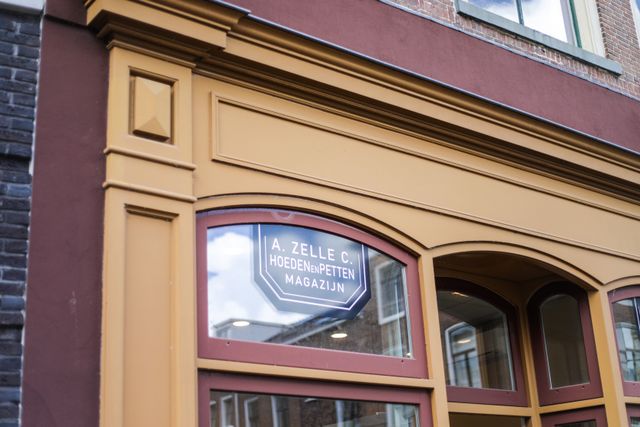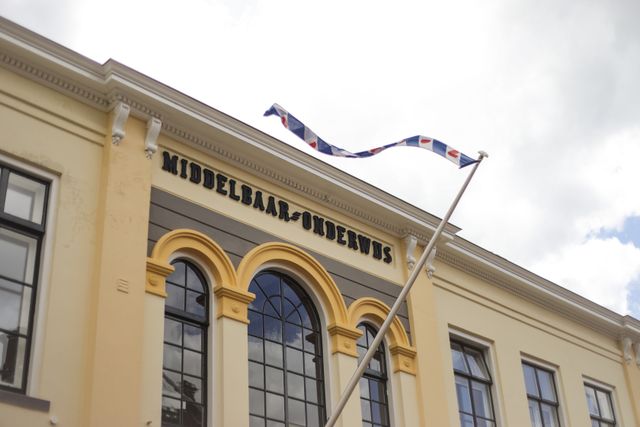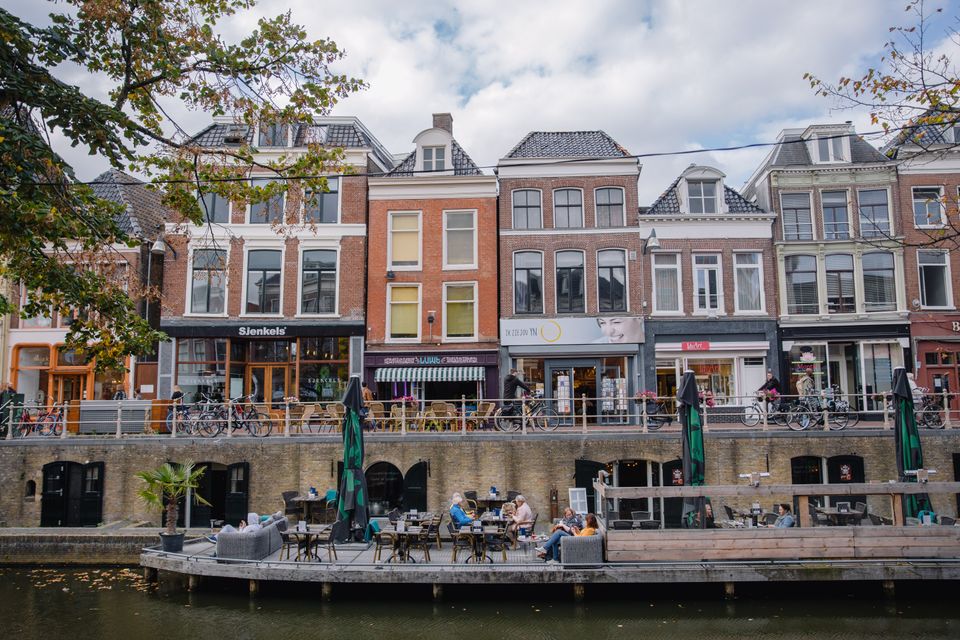Mata Hari

Leeuwarden is the hometown of many famous faces. At least one of them is still known worldwide to this day. Speculations about her life as a double agent have contributed to the legend surrounding this extraordinary woman. Do you already know who we are talking about?
On 7 August 1876, Margaretha Geertruida Zelle, the daughter of Adam Zelle and Antje van der Meulen, was born in downtown Leeuwarden. Adam Zelle took over his father's hat business in 1839. Margaretha lived with her parents above the shop on Kelders 33. The Zelle family was closely linked to this corner of Leeuwarden; they had lived diagonally opposite the hat shop since the end of the 18th century. Margaretha's father was also born there.
Happy childhood
Adam Zelle did good business with his hat shop. He supplied the local militia, among others. Adam was an entrepreneur and liked to show that he belonged to the upper middle class. Through lucky speculations with shares, he became a wealthy man. This enabled the Zelle family to buy an impressive corner house on Grote Kerkstraat 212 in 1883. Young Margaretha lived there with pleasure, getting everything her heart desired and enjoying playing in the old streets around her house.

The Hofschool (court school)
Near the Grote Kerkstraat, near the Hofplein, you will now find Bar Bistro DuCo, but a primary school used to be located here. And you guessed it: Margaretha learned to read and write here. It may no longer be a primary school, but the beautiful square and its monumental buildings have not changed. For example, Het Oranje Bierhuis café (the oldest open café within the city canals-it was already in business in 1770!) was already in existence when Margaretha took lessons there. Have you become curious? Then come and experience the atmosphere! You will find numerous nice restaurants, bars and terraces on Gouverneursplein, Hofplein and Raadhuisplein.
Out of Friesland
Margaretha's happy childhood years ended abruptly when her father went bankrupt due to unfortunate speculations. Her parents often argued, but not only with each other; her father also had regular clashes with other inhabitants of Leeuwarden. In 1890, Margaret's parents separated. Her mother died of tuberculosis in 1891. Her father sold his house on Grote Kerkstraat as well as his houses on Korenmarkt and Tweebaksmarkt, two properties in Franeker and a property in Sneek. He packed his suitcase and left for Amsterdam.
Margaretha, now 15 years old, stayed with relatives elsewhere in the country. She trained as a kindergarten teacher in Leiden, and later moved to The Hague. When she was 18, she responded to a singles ad from a KNIL captain Rudolph MacLeod who was twenty years older. They got engaged a week later, married soon after and boarded a boat to the Dutch East Indies, where she was introduced to Indian culture and its traditions.
Traces of Mata Hari
-
De Kelders 33
A girl named Margaretha Geertruida Zelle was born in this house on 7 August 1876. She spent the first years of her life on Kelders 33, where her father had a hat shop. Today, you can still visit Mata Hari's birthplace.

-
MATA HARI STATUE
Near the birthplace on Kelders 33, you will find the Mata Hari statue. In the middle of the stone bridge above one of the city canals, she is dancing. Due to her eventful life and ever-changing relationships, not everyone was happy with the statue at the time. Still, many find it a nice reference to her birthplace and city.

-
Grote Kerkstraat 212
This beautiful national monument was bought by Mata Hari's father when he had made good money. Mata Hari spent the second part of her childhood in this house, which stands on top of an old mound. This beautiful property in the equally beautiful street is worth a visit!

-
Grote Kerkstraat 12
At the end of the Grote Kerkstraat, directly opposite the city palace and ceramics museum Het Princessehof, you will now find Binnenwerk. The building, built in 1875, used to serve as a girls' secondary school, where Mata Hari had lessons. It seems that she was a difficult student whose behavior was often put in her file. In April 1890 she left school without unenrolling, probably due to difficulties at home.

-
Mata Hariplein
At the Stadsschouwburg de Harmonie and Poppodium Neushoorn you will find Mata Hariplein(square); a fitting name given her career as a dancer and performer. If you walk around the Harmonie, you will arrive at Schoolstraat 30. Mata Hari and her parents lived here briefly, just after her father went bankrupt.

From Paris to Milan
Margaretha joined a local dance group and started performing. In 1897, she first used her stage name 'Mata Hari', Malay for Eye of the Day, or the sun.
Margaretha and Rudolph had marital problems. In 1902, they returned to the Netherlands and parted ways. Margaretha left for Paris and started her career as an exotic dancer. She permanently called herself Mata Hari and received rave reviews. She travelled through Europe and America and gave performances in Vienna, Monaco, Madrid and Milan.

Lack of money
On August 3, 1914, Germany declared war on France. Mata Hari was in Berlin when World War I broke out, which was not good for her. She was seen as a citizen of the French enemy, and that is why the bank froze her assets. She could no longer perform due to the war. This made her dependent on lovers for income. She left Germany and tried her luck elsewhere. Everywhere she went, she received a lot of male attention. Due to her jumping from one senior officer to the next, she unfortunately also attracted the attention of the French, German and British intelligence services.
Because she was a traveling artist, she was ideally suited as a spy, according to the German consul Cremer. He offered her 20,000 francs. Mata Hari accepted it: after all, the Germans had seized her belongings. She left for Paris and had no intention of doing anything for the German consul.
When she fell in love with a Russian captain, she tried to get to the front lines to see him. To do this, she had to apply for a special travel document from the head of the French intelligence service: Captain Ladoux. He had already been warned about Mata Hari by the British, who thought her behavior was extremely suspicious, and therefore had her followed. Ladoux was convinced that she was spying for the Germans and wanted to catch her red-handed.
Arrest
When Mata Hari returned to Paris, Ludoux asked her if she would be willing to spy for the French in Belgian territory. Mata Hari needed money and had high hopes: she was willing to do it for a million francs. Completing her French mission was not smooth sailing, so she decided to do things differently. She seduced a German major and tells him she is a German spy. She gave him some (in her eyes) 'harmless' information to gain his trust. At the same time, she also approached a French colonel, who told them that she is a French spy. She told him what she learned from the German enemy. Mata Hari had been exposed: the German major had misled her, the information she passed on to France couldn’t be verified. She attempted travelling to the Netherlands, but in vain. She was arrested on suspicion of spying for the German enemy.
Mata Hari was interrogated again and again while she is in custody. Eventually she decided to come clean: she accepted money from the Germans but had never spied for them. Yet this truth was not important enough. The troops were in bad shape and France needed a public success. She was accused of pro-German espionage activities, even though they had no real evidence. It was unanimously decided that the death penalty would be the only appropriate punishment. On October 15, 1917, Mata Hari was killed by a firing squad at the age of 41.

